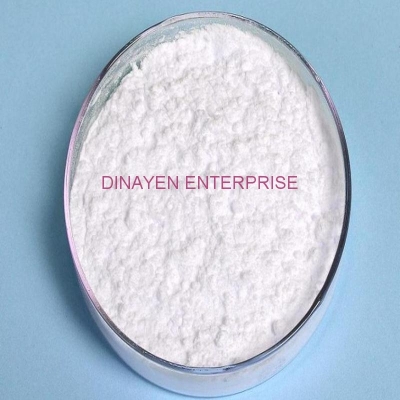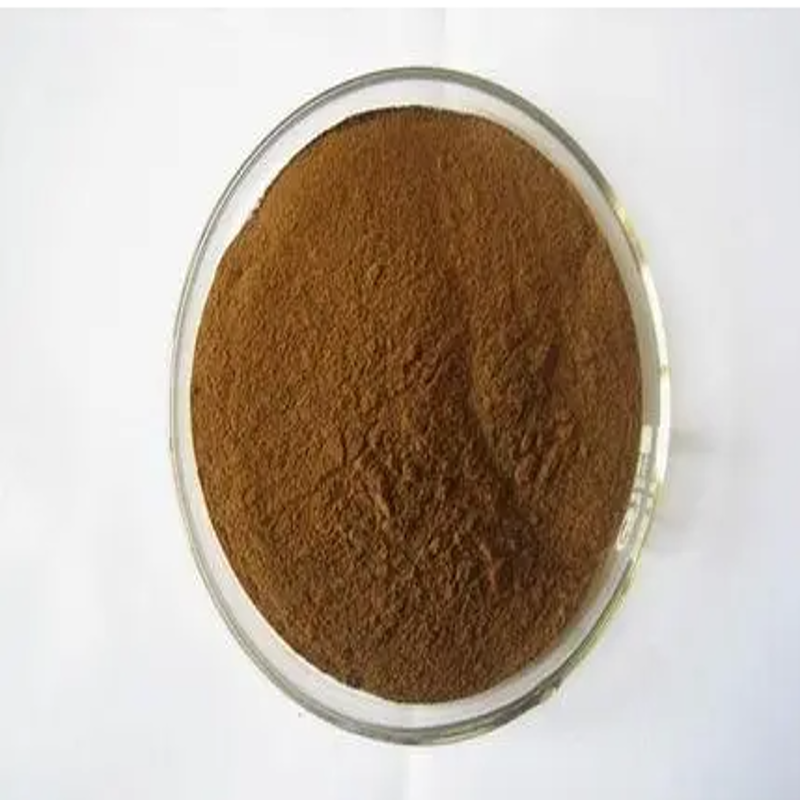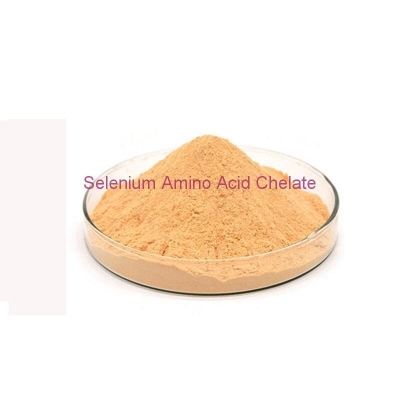China Dietary Nutritional Supplement Industry Development Report (2020) releases dietary nutrition supplement industry development plus.
-
Last Update: 2020-08-12
-
Source: Internet
-
Author: User
Search more information of high quality chemicals, good prices and reliable suppliers, visit
www.echemi.com
original title: "China Dietary Nutritional Supplement Industry Development Report (2020)" published the dietary nutrition supplement industry development andraw materials are the quality of dietary nutrition supplements to ensure and foundation. From the supply side, China is one of the most complete global dietary nutrition supplement industry chain, is the world's largest supplier of raw materials, but also the world's largest producer of health food production enterprises (2317), through the import and export of raw materials, can be the world's dietary nutrition supplement market situation and development trends for a preliminary forecast. Recently, the China Medical Insurance Chamber of Commerce released the "China Dietary Nutritional Supplement Industry Development Report (2020)" (hereinafter referred to as the "Report"). The Report analyzes the development situation of the industry from the perspective of industrial development, and on the basis of the analysis of massive data, focuses on combing the market situation, international trade situation, consumption behavior, regulatory changes in the dietary supplement industry, and prejudges the development trend of the industry to provide guidance for the development of the industry. The Report also summarizes a large number of informative data on the import and export of dietary nutrition supplements, which is of great reference value to the relevant raw materials enterprises to grasp the future market trends.there are many kinds of raw materials for dietary nutritional supplements , including: vitamins, minerals, amino acids, extracts (plants, animals), probiotics and so on. Among them, China has a great advantage in the production and export of dietary supplement raw materials such as vitamins, amino acids and plant extracts.according to thePlant ExtractsReport, China's exports of plant extracts in 2019 amounted to US$2.38 billion, up only 0.2% YoY, down from 20.0% growth in the same period in 2018, with exports of 86,900 tons, up 5.7% YoY, and export prices of US$27.3/kg, down 5.2% YoY. The analysis shows that the main reason for the low export of plant extracts is the influence of Sino-US trade friction, which is the largest export market of plant extractin in China. China's exports of plant extracts to the United States in 2019 were only $450 million, down 15.3 percent year-on-year. Another reason for the low level of plant extract exports is the fall in export prices, with average export prices falling by 5.2 per cent year-on-year.in terms of export varieties, the top 10 hot varieties are stevia leaf extract, menthol, eucalyptus oil, life-long chrysanthemum extract, chili extract, licorice extract, citrus larvae extract, cranberry extract, reed, ginkgo leaf extract, total exports of 1.21 billion U.S. dollars, accounting for 51.2% of the export value of extract. Among them, the export value of stevia leaf extract reached US$270 million.the United States, Japan, India, Hong Kong, Malaysia, Indonesia, Korea, Spain, Germany, France for China's plant extractexports to the top 10 markets. Although affected by Sino-US trade friction, China's export trade with the United States has been affected, but the United States is still the largest market for China's plant extract exports.2019, China's exports to U.S. extracts amounted to US$450 million, down 15.3% YoY, accounting for 19.0% of total exports of total extracts, a decrease of 3.0% YoY, and export products were mainly raw products of dietary supplements such as stevia leaf extract, licorice extract and ginkgo leaf extract. India and Malaysia have fast market demand growth, with exports of plant extracts to India rising rapidly from eighth place in 2018 to third place in 2019, with exports of US$130 million in 2019, up 41.4% YoY, with major exports Exports to Malaysia rose from ninth place in 2018 to fifth place in 2019, with exports of US$130 million, up 48.5% YoY, with stevia extracts in high demand. In addition, China's exports of plant extracts to Spain, France, Mexico and other countries, year-on-year growth rate is also more than double-digit. Notably, china's Hong Kong region, where exports of plant extracts from the Mainland to Hong Kong fell by 15.6% in 2019, while exports fell 19.9% year-on-year to $130 million, compared with a 51.0% year-on-year decline in 2018.in terms of imports, Asia is China's main import market, with plant extract imports amounting to US$850 million in 2019, up 16.9% YoY, and imports of 40,300 tons, up 29.1% YoY. Among them, the import of menthol contributed a huge amount of energy, its imports accounted for 40.6% of the total plant extract imports, imports amounted to 350 million U.S. dollars, an increase of 35.2% year-on-year;Asia was the largest import market in terms of import markets, with imports of US$55,821.1 million, accounting for 66.0 per cent, followed by Europe and North America. The top 10 importers of plant extracts are India, the United States, Uzbekistan, Germany, Malaysia, France, Japan, Indonesia, Italy and South Korea. India was the first to import $390 million, up 25.1 per cent year-on-year, while Malaysia grew at a relatively high, up 83.2 per cent year-on-year.vitaminsvitamin raw materials are the bulk of China's raw materials import and export. From 2011 to 2019, the import and export volume of imports and exports increased and decreased from 2011 to 2016, and overall looked relatively stable, but the import and export volume in 2017 increased by 43.1% year-on-year, and continued to grow in 2018. Imports and exports fell to $3.00 billion in 2019, down 19.6% year-on-year, a larger decline.from the trend of import and export prices of vitamin raw materials, import and export prices in 2011 the highest, but with the increase of domestic production capacity, from 2012 to 2015, the import and export prices of vitamins are in a slightdecline, from 2016 to 2018 is on the rise, but in 2019 prices fell to 10.0 U.S. dollars / kg, down 20.5% YoY., Europe is the main market, with imports and exports amounting to US$1.10 billion, accounting for 36 per cent, followed by Asia, with imports and exports amounting to US$890 million, accounting for 30 per cent, and North America with US$710 million, or 24 per cent. In terms of specific countries, the United States, Germany and Japan imported and exported more, amounting to $680 million, $360 million and $190 million, respectively.exports, exports of vitamin-based raw materials and export prices fell. Exports remained relatively stable between 2011 and 2015. From 2016 to 2018, vitamin ingredients are on the rise, and the market will cool in 2019. Exports of vitamin feedstocks in 2019 were US$2.72 billion, down 21.1% year-on-year, and export prices also decreased significantly.the main export markets for vitamin raw materials are the United States, the Netherlands and Germany. It should be noted that the export volume of the top 10 exporters of vitamin feedstock has decreased to varying degrees, especially in Brazil, Japan and the United States, which decreased significantly year-on-year. The price of exports in 2019 decreased by 21.7% year-on-year to $9.50/kg. imports, imports of vitamin raw materials in 2019 were $290 million, down 2.8% year-on-year. Europe was the largest import market, with imports of US$17,361.3 million, down 22.2% or 61% yoY, followed by Asia, with imports of US$81.963 million, or 29%, and a growth of 118.3%. In terms of specific countries, Switzerland, Japan, Germany, France and the United States are the top 5 import markets for vitamin raw materials, with Switzerland's import amount ing on $6829.7, ranking first. Coenzyme Q10 2019, the import and export of coenzyme Q10 raw materials amounted to US$14.4669 million, a decrease of 6.2% YoY. North America's import and export volume was the largest of US$10.2881 million, down 8.1% yoY, followed by Asia and Europe. In terms of specific country, the United States is the largest import and export of coenzyme Q10 raw materials, amounting to US$89.162 million, followed by Canada, with imports and exports amounting to US$1.3719 million, a larger increase, up 59.3% year-on-year. exports, according to the 2014-2019 export analysis, the total export of Coenzyme Q10 is on a downward trend, after falling to US$127.01 million in 2016, then climbing to US$153.67 million in 2017 and falling in 2018 and 2019. According to statistics, exports in 2019 were $14.53 million, down 6.3% year-on-year. Coenzyme Q10 raw materials main export market is North America, exports amounted to 10,781,000 U.S. dollars, accounting for 72%, exports decreased by 8.3% YoY, the main export countries are the United States and Canada, of which 552.8 tons of exports to the United States, amounting to 87.174 million U.S. dollars, exports to Canada At US$13.607 million, up 60.6 per cent year-on-year, there was a larger growth margin, followed by the European market, with exports of US$1.5939 million and exports of 91.7 tonnes, with Germany having exports of US$8.348 million. In addition, oceania's Australian market was also noteworthy, with exports of $5.661 million, down 30.9 per cent year-on-year. In addition to the above markets, there are several growth markets are also worthy of attention, such as Iran, Japan, Brazil and other countries have a relatively large increase in exports, an increase of 595.9%, 121.9%, 63.0% year-on-year. imports, imports of coenzyme Q10 raw materials in 2019 were US$4.143 million, down 2.0% yoy. In terms of imports, North America is the main import market, with imports of $2.1 million. Imports of coenzyme Q10 raw materials rose significantly in 2018, with imports in 2019 essentially flat from 2018. From a specific country, the United States, Australia, Japan as the main import countries. Fish Oil 2019, the import and export volume of fish oil raw materials was 80,000 tons, the import and export volume was 18.1354 million U.S. dollars, an increase of 14.8% YoY, the export volume was 880.79 million U.S. dollars, the import volume was 93.222 million U.S. dollars, in a trade deficit. From the situation of import and export analysis, fish and oil products have a certain market size and the use of people in China, which is very different from other raw materials import and export situation. import and export markets, Latin America's imports and exports amounted to $68.935 million, while Asia's was $49.867 million, up 40.2% year-on-year. In terms of country-specific imports and exports, Peru was the first to import and export $ 45.766 million, followed by Chile, which had imports and exports of $21.125 million, and it was worth noting. exports, Asia and North America dominate, while Europe and Latin America account for equivalent exports. In 2019, fish oil exports amounted to US$88,079,000, up 35.3% year-on-year. Among them, Asia's exports grew the most, up 70.3% year-on-year, with exports reaching $2.6192 million, or 30%, while exports to North America amounted to $24.960 million, up 42.0% year-on-year, or 28%, and Asia and North America accounted for 58% of total exports. Exports from Europe and Latin America are comparable, at 19 per cent and 18 per cent, respectively. country-specific analysis, Chile is China's first major exporter of fish oil raw materials, exports amounted to 13.744 million U.S. dollars, an increase of 23.9% YoY, followed by Canada, with exports amounting to 13.453 million U.S. dollars, up 31.6% YoY, and U.S. exports amounting to 11.507 million U.S. Other countries of concern are South Korea, India and Japan, where the amount of fish oil raw materials exports increased by 174.0%, 109.4% and 77.9%, respectively, and the export volume of major export markets increased by varying degrees compared to 2018. From this point of view, the use of fish oil products in the global state is on the rise, with a relatively wide range of use. imports, imports of fish oil raw materials in 2019 were US$93.222 million, the same as in 2018, and the amount imported exceeded the amount of exports. Latin America is China's main import market for fish oil raw materials, amounting to US$53.567 million, or 57 per cent, followed by Asia with an import value of US$2.3675 million, of which ASEAN imported US$21.175 million. In terms of trends, Oceania's imports increased by 458.5 per cent year-on-year and Africa's by 129.7 per cent, so the rise of emerging markets has also provided more sources of imports for fish oil raw materials. In terms of country-specific terms, Peru, Vietnam and Chile are the top imports, with imports amounting to US$4.5766 million, US$1.4315 million and US$7.381 million, respectively. In addition to these countries, Australia and the United Kingdom are also imports of concern, although imports of only $1.511 million and $174,000, but year-on-year growth of 452.4% and 779.8%, respectively, with strong growth. chondroitin chondroitin-like raw materials are an important part of some bone health products, so by analyzing the import and export of chondroitin-type raw materials, you can reflect the market situation of bone health products from the side. In 2019, the import and export volume of chondroitin raw materials was US$15.6774 million, of which US$15.3354 million was exported and US$3.42 0 million was imported, far outstripping the import volume. export market, the main export market is North America, with exports amounting to US$73.671 million, or 48 per cent, followed by Asia and Europe, both at 22 per cent. From the market trend, the conventional market of chondroitin raw materials in North America, Asia, Europe export volume has decreased to varying degrees, but the amount of exports to Oceania increased relatively large, up 63.1% YoY, possibly.
This article is an English version of an article which is originally in the Chinese language on echemi.com and is provided for information purposes only.
This website makes no representation or warranty of any kind, either expressed or implied, as to the accuracy, completeness ownership or reliability of
the article or any translations thereof. If you have any concerns or complaints relating to the article, please send an email, providing a detailed
description of the concern or complaint, to
service@echemi.com. A staff member will contact you within 5 working days. Once verified, infringing content
will be removed immediately.







